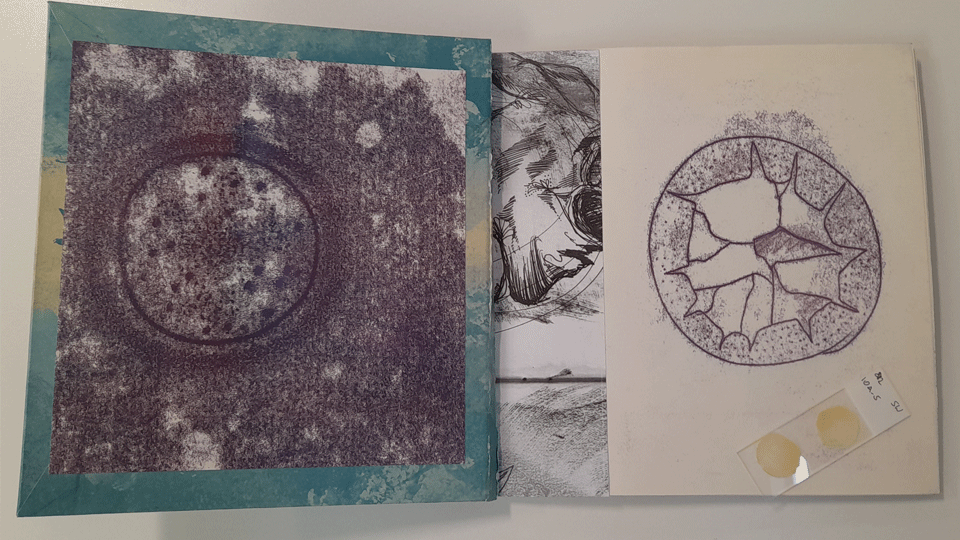20. Prints of Diatoms from a Microscope Slide
Dr Savannah Worne
Understanding the relationship between water quality, the health of aquatic ecosystems and climate change, is a complex issue in the modern world.
Our waters face multiple pressures including to provide clean drinking supply, a recreational facility, a habitat for multiple flora and fauna, and to act as a carbon store. However, aquatic systems are increasingly being exploited, polluted and degraded, which ultimately changes their capacity to provide these ecosystem services. To better understand the history of change in aquatic environments, we can use the fossil remains of a type of algae called diatoms, as seen from an artist’s Stephanie Lindley’s perspective in this cabinet. This piece of art was created as part of a Pint of Science Festival.
Diatoms are single celled and have skeletons made of silica. The type of species we find in a given water body will be a result of multiple factors including the nutrient concentrations, light availability and water clarity, water levels and temperature, and substrate type (e.g. gravel, silt, open water). As diatoms die, they sink to the bottom of the water and their skeletons are preserved in the sediments. Therefore, we can collect those sediments and look at the different fossils we find through time and see how the types of species (assemblage) change. Using the assemblages, we can infer what the conditions were at the time they were alive and create an environmental reconstruction for that given water body. I have used this technique in several different ways through my research, including reconstructing the amount of sea ice in the Bering Sea over the last 1 million years! However, my current work is using this method, alongside some sediment geochemistry, to reconstruct the nutrient accumulation in a shallow lagoon at Rutland Water Nature Reserve, which has sewage effluent feeding into the site.

Find out more
More about Savannah’s research: https://www.lboro.ac.uk/subjects/geography-environment/staff/savannah-worne/
Read Savannah’s publication using diatom fossils to reconstruct sea ice history in the Bering Sea over the last 1 million years:
https://www.sciencedirect.com/science/article/pii/S0277379121001256